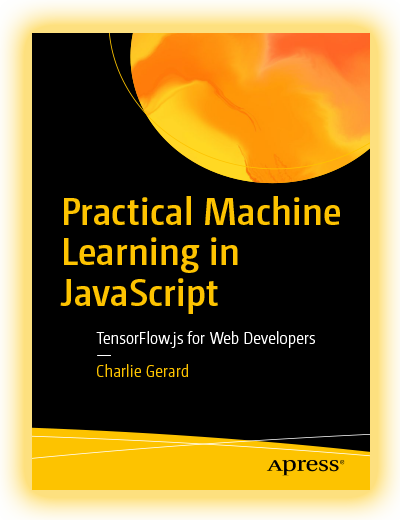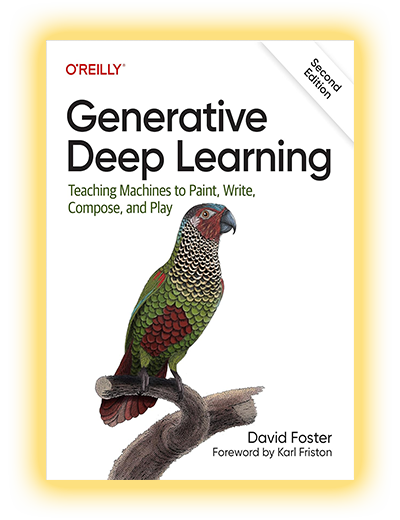Effective work with LLMs (Large Language Models) depends directly on how well you formulate your prompts. The book "Prompt Engineering" by Lee Boonstra is a structured, professionally crafted guide that helps developers, designers, and product managers elevate their interaction with generative AI. The author shares not only techniques for writing prompts but also explains why some prompts work and others fail - using real-world cases with OpenAI, Google, Anthropic, and other platforms.
Download "Prompt Engineering" in PDF for free today if you work with AI, build chatbots, or automate processes using LLMs. This guide helps you craft not just a prompt, but controlled model behavior. It will definitely change your approach to prompt design.
"Prompt Engineering" Lee Boonstra Book Summary: Key Insights and Best Practices
The guide offers a comprehensive guide to the iterative and nuanced process of crafting high-quality prompts that guide Large Language Models (LLMs) to produce accurate, relevant, and useful outputs. Far beyond simply typing a question or command, prompt engineering involves carefully designing inputs to leverage the full potential of LLMs such as GPT, balancing factors like model settings, wording, structure, and context.
Definition and Nature of Prompt Engineering
Prompt engineering is the iterative process of designing high-quality prompts that guide Large Language Models (LLMs) to produce accurate and desired outputs. While anyone can write a prompt, crafting the most effective one is complex, influenced by factors such as the model, its training data, configurations, word choice, style, tone, structure, and context. LLMs function as prediction engines, taking sequential text as input and predicting the next token based on their training data.
LLM Output Configuration and Sampling Controls
Effective prompt engineering involves optimizing various model configurations that control the LLM’s output, beyond just the prompt. Important settings include output length, which impacts computation, response times, and costs, and sampling controls such as Temperature, Top-K, and Top-P. Temperature controls the degree of randomness in token selection (lower for deterministic, higher for diverse results), with a setting of 0 being deterministic. Top-K selects the K most likely tokens, while Top-P selects tokens whose cumulative probability does not exceed a certain value. These settings interact, and extreme values can render others irrelevant. A common starting point for coherent, creative results is Temperature 0.2, Top-P 0.95, and Top-K 30.
Fundamental Prompting Techniques
Basic techniques include General/Zero-shot Prompting, which provides only a task description without examples. One-shot & Few-shot Prompting enhance model understanding by providing one or multiple examples of desired output structures or patterns. For few-shot classification tasks, it's essential to mix up the classes in examples to avoid overfitting. Additionally, System, Contextual, and Role Prompting are used to guide LLMs: System prompting sets the overall context and purpose, Contextual prompting provides specific, immediate task details, and Role prompting assigns a specific character or identity for the LLM to adopt.
Advanced Reasoning and Tool-Use Prompting
More sophisticated techniques improve LLM capabilities for complex tasks: Step-back Prompting enhances performance by first prompting a general question, then using that answer as context for the specific task to activate relevant background knowledge. Chain of Thought (CoT) Prompting generates intermediate reasoning steps, leading to more accurate answers for complex tasks, and it generally requires setting the temperature to 0. Self-consistency combines sampling and majority voting to generate diverse reasoning paths and select the most consistent answer. Tree of Thoughts (ToT) generalizes CoT by allowing LLMs to explore multiple reasoning paths simultaneously. ReAct (Reason & Act) prompting enables LLMs to solve complex tasks by combining natural language reasoning with external tools (like search or code interpreters) in a thought-action loop.
Automated Prompt Engineering and Code Capabilities
Automatic Prompt Engineering (APE) is a method to automate the generation, evaluation, and refinement of prompts, alleviating the need for human input and enhancing model performance. LLMs also demonstrate strong Code Prompting capabilities across various programming languages, including writing code, explaining code, translating code from one language to another, and debugging and reviewing code by identifying errors, suggesting fixes, and offering improvements.
Best Practices for Prompt Design
Key prompt design practices include providing examples (one-shot/few-shot) as a powerful teaching tool, designing with simplicity by using concise, clear language and strong action verbs, and being specific about the desired output to guide the model accurately. It is generally more effective to use positive instructions over constraints. Controlling the max token length in the prompt or configuration is crucial for managing response size and cost. Additionally, using variables in prompts makes them dynamic and reusable, especially for application integration, and experimenting with input formats and writing styles can yield different results.
Best Practices for Output Formats and Documentation
For non-creative tasks, experimenting with structured output formats like JSON or XML is highly beneficial, as JSON helps ensure consistent style, focus on specific data, reduce hallucinations, and handle data types. Tools like json-repair can help fix truncated or malformed JSON output. Furthermore, working with JSON Schemas for input provides the LLM with a clear blueprint of expected data structure and types. Finally, a critical best practice is to document all prompt attempts comprehensively using a template (e.g., Name, Goal, Model, Temperature, Prompt, Output) to track performance across model versions, learn from results, and debug future errors, recognizing that prompt engineering is an iterative process of crafting, testing, analyzing, and refining.
Who should read this prompt engineering guide?
This guide is suitable for anyone looking to effectively use LLMs and ChatGPT in their professional workflow. It does not require deep technical knowledge but offers powerful tools already used in business, education, and development. It’s ideal for:
- Developers and engineers - learn how to control LLM outputs, optimize prompts, and build prompt chains.
- UX designers - understand how to formulate instructions for conversational interfaces.
- AI product managers - get working templates and strategies for building AI products.
- Content specialists - master text generation, scripting, summarization, advertising, and documentation with controlled outcomes.
- Educators and trainers - integrate prompt engineering into teaching and training scenarios.
What will you gain from reading "Prompt Engineering"?
Lee Boonstra treats prompt engineering not as a trend, but as a discipline that demands awareness and structure. The author clearly explains that a prompt is not just text - it’s a control mechanism for model behavior, and every part of it impacts the result.
The book outlines key methods: few-shot prompting, zero-shot prompting, role prompting, chain-of-thought prompting, and system message tuning. It features dozens of case studies across domains - from customer support to creative applications. It also covers context windows, temperature settings, token limits, model constraints, and output evaluation.
The author analyzes mistakes, shares best practices, and provides real-world formulas used in production systems - making this guide a practical toolkit for professionals working with AI.
How can you apply this book in practice?
Understanding prompt engineering principles allows you to create solutions that scale reliably, produce controlled outcomes, and optimize resource use. Practical applications include:
- Controlling model behavior - using system instructions and role-based prompts
- Creating prompt chains - for complex workflows like code generation, documentation, and reporting
- Testing and debugging prompts - including A/B testing, evaluation, and prompt optimization
- Developing voice and text interfaces - with GPT, PaLM, Claude, and other models
- Embedding prompts into APIs and UI - to build products with logic embedded in the user interaction layer
The Developer's Opinion About the Book
I’ve worked with generative AI since 2020, and I’ve seen prompt engineering evolve from chaos into a formal discipline. Lee Boonstra’s book is exactly what the market needed - structured, modern, and highly practical. I especially appreciated the focus on controllability: a prompt shouldn’t “guess” the task - it should follow the instruction. The testing and optimization section stood out too - in real-world development, that’s what separates quality prompts from random output. I recommend this book to anyone working with AI - it saves hundreds of hours and delivers a real competitive edge.
Sarah Bennett, Machine Learning Developer
FAQ for "Prompt Engineering"
1. Is the book suitable for non-programmers?
Yes, it is accessible to readers without a technical background. While some examples are based on engineering logic, the author explains everything clearly and avoids unnecessary jargon. Explanations are backed by practical scenarios that are easy to understand not just for developers but also for managers, marketers, and designers. The section on business-oriented prompts is especially helpful for interacting with LLMs without writing code.
2. Does the book cover specific platforms and models?
Yes. It discusses major LLMs and platforms: OpenAI (GPT), Google PaLM, Anthropic Claude, and more. The author explains how to craft prompts based on architectural and behavioral differences between models. It also includes considerations for token limits, output types, and system message configurations - valuable for those working with multi-model environments and commercial/open-source tools.
3. Are there ready-to-use prompt templates in the book?
Yes, it includes dozens of structured templates categorized by task type: text generation, coding assistance, styled responses, customer support, information extraction, and more. Each template comes with an explanation of how it works, when to use it, and what parameters can be adjusted. This dramatically speeds up the adoption of LLMs in workflows, especially when building large prompt libraries or complex prompt chains.
4. Does the guide help with prompts for voice interfaces?
Yes. A dedicated chapter explores prompt design for voice UIs. Drawing from her experience on Google Assistant, the author explains how to manage tone, brevity, intonation, clarification prompts, and time constraints. Special attention is given to how voice delivery impacts model perception and demands different prompt structures than text interfaces.
5. Is this book useful in a corporate setting?
Definitely. It addresses the full range of needs faced by product and tech teams implementing LLMs - from content and code generation to customer support and personalized user flows. The book includes strategies for scaling, testing, adapting prompts to brand voice, and ensuring ethical output. It’s ideal for SaaS platforms, enterprise products, and B2B services.
6. Does the book analyze mistakes and anti-patterns?
Yes - and this is one of its biggest strengths. Lee Boonstra categorizes the most common prompt design errors, from vague instructions and excessive context to contradictory phrasing and token overload. The book includes anti-patterns, fixes, and both manual and automated evaluation methods. This helps you build not just effective prompts, but stable, scalable solutions - crucial in production and high-load environments.
Information
| Author: | Lee Boonstra | Language: | English |
| Publisher: | ISBN-13: | - | |
| Publication Date: | February 2025 | ISBN-10: | - |
| Print Length: | 68 pages | Category: | Machine Learning and Artificial Intelligence Books |
Get PDF version of "Prompt Engineering" by Lee Boonstra
Support the project!
At CodersGuild, we believe everyone deserves free access to quality programming books. Your support helps us keep this resource online add new titles.
If our site helped you — consider buying us a coffee. It means more than you think. 🙌

You can read "Prompt Engineering" online right now!
Read book online* →*The book is taken from free sources and is presented for informational purposes only. The contents of the book are the intellectual property of the author and express his views. After reading, we insist on purchasing the official publication on Amazon!
If posting this book in PDF for review violates your rules, please write to us by email admin@codersguild.net




